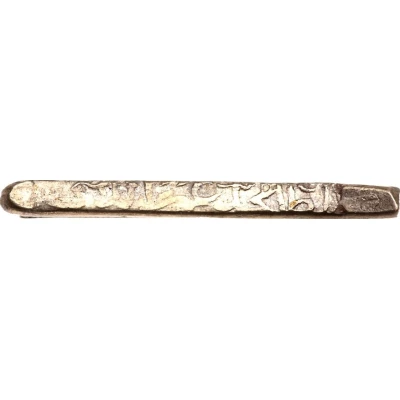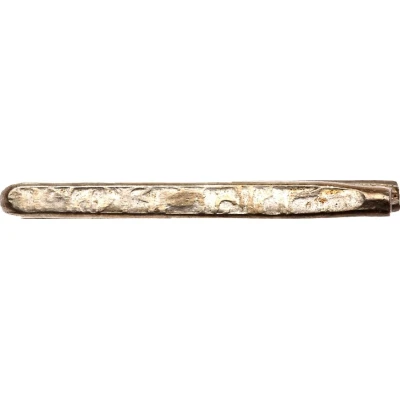1 Larin - Ibrahim Kalaafaan ND
| Silver | - | - |
| Issuer | Maldives |
|---|---|
| Sultan | Ibrahim III (1585-1609) |
| Type | Standard circulation coin |
| Years | 1585-1609 |
| Value | 1 Larin |
| Currency | Larin "Dhigu laari" |
| Composition | Silver |
| Shape | Other (Bent wire) |
| Demonetized | Yes |
| Updated | 2024-10-06 |
| Numista | N#117917 |
|---|---|
| Rarity index | 95% |
Comment
According to history, the first dhigu laari was struck in the Maldives, during the reign of Sultan Ibrahim III ibn Ghazi Muhammed (1585-1609), son of the hero Sultan Ghazi Muhammed Thakurufa'anu Akbar al-'Azam. Dhigu laari or larin, which owes its name to Lar, in the Persian Gulf, where it was originally struck, was one of the standard currencies of the Indian Ocean in the late 16th century. The dhigu laari is actually a long piece of silver, about three inches in length, doubled over and stamped with the name of the sultan, in Arabic.During the 17th and 18th centuries, lārin (parallel straps of silver wire folded in half with dyed Persian and Arabic inscriptions) were imported and traded as currency. This form of currency was used in the Persian Gulf, India, Ceylon and the Far East during this time. Historians agree that this new form of currency was most probably exchanged for cowry shells and indicates Maldives’ lucrative trade with these countries. The first Sultan to imprint his own seal onto this currency was Ghaazee Mohamed Thakurufaanu Al Auzam. The seal was much broader than the wires hence it was barely legible.
6 unassigned Larin wires:
© Image courtesy of Ira & Larry Goldberg Auctioneers
Interesting fact
The 1 Larin coin from Maldives, which features Ibrahim Kalaafaan ND (1585-1609), is made of silver and has a unique feature - it has a crescent moon and star symbol on one side, which represents the Islamic faith that is prevalent in the country. This symbolism highlights the importance of religion in the culture and history of Maldives.

